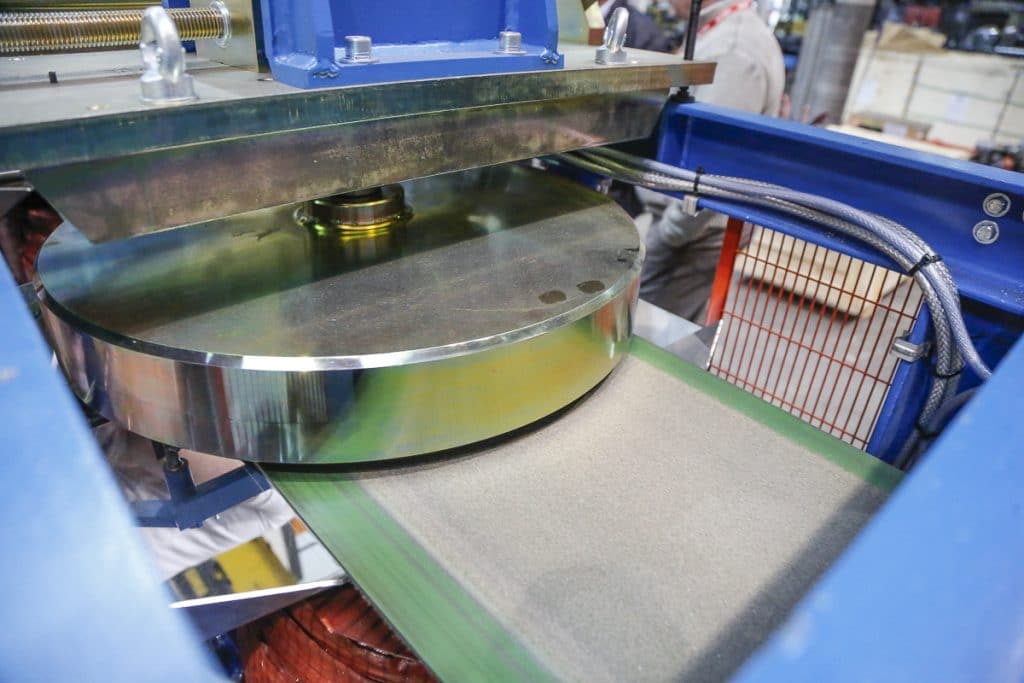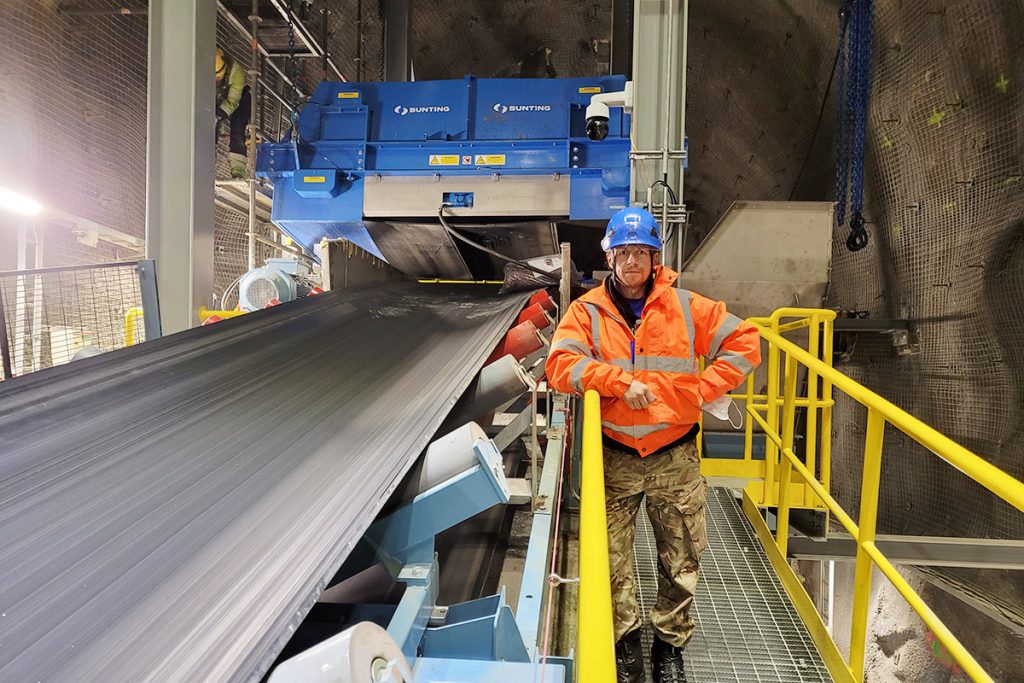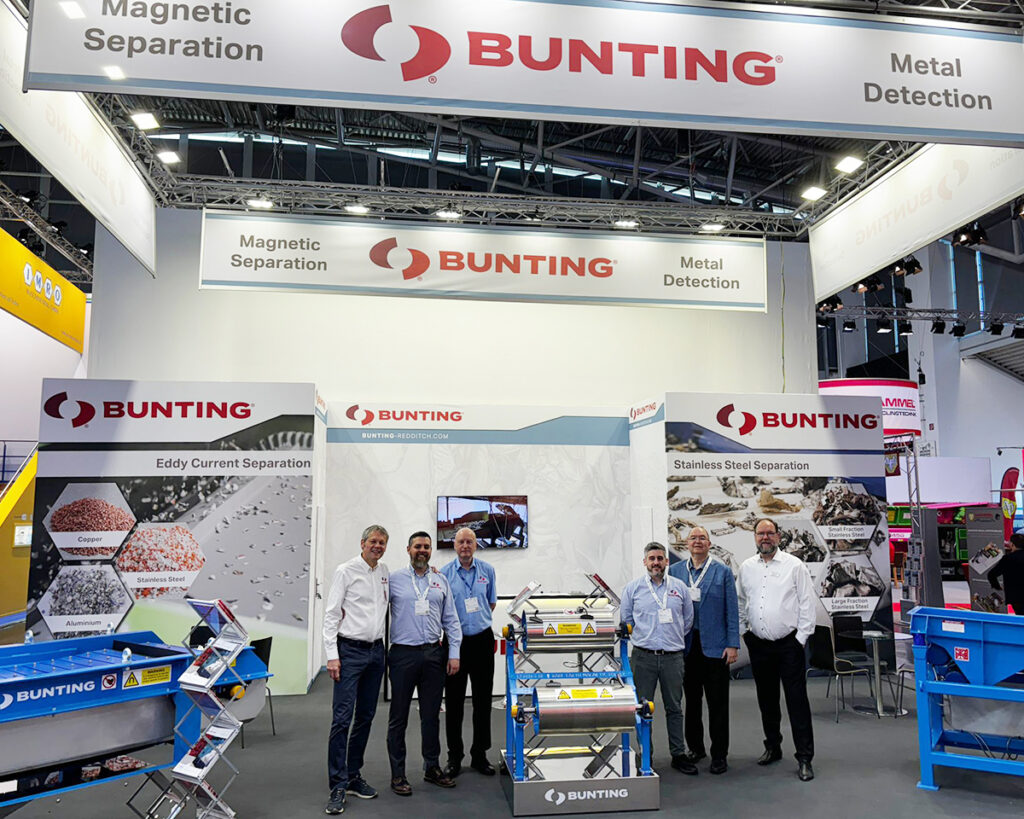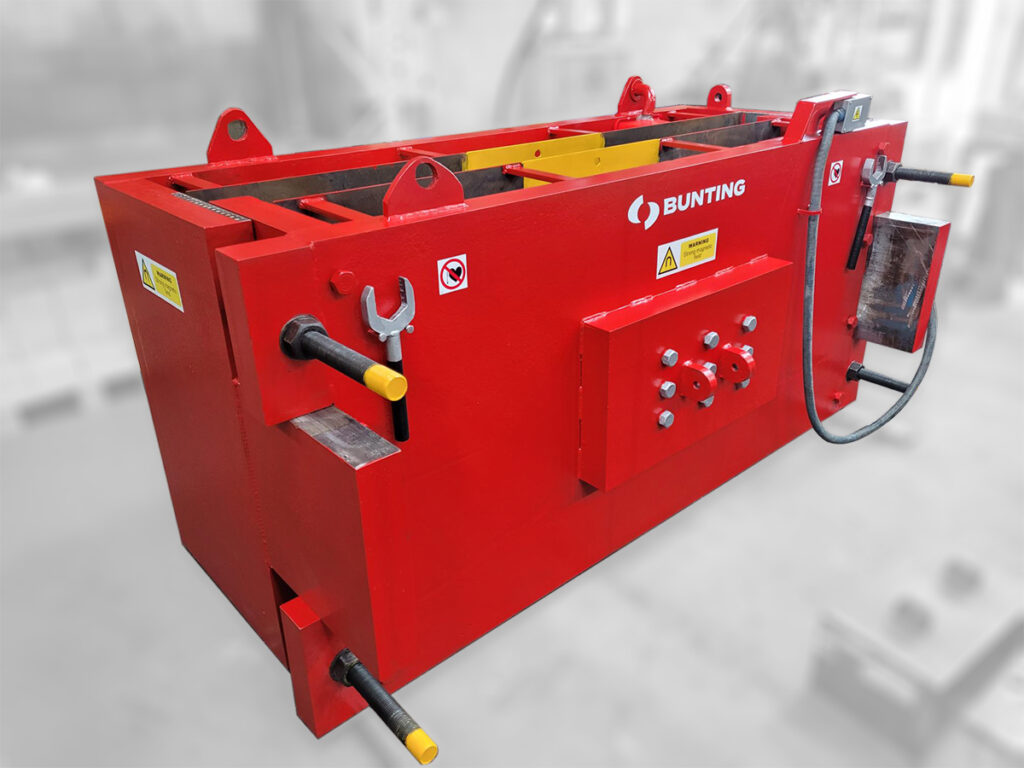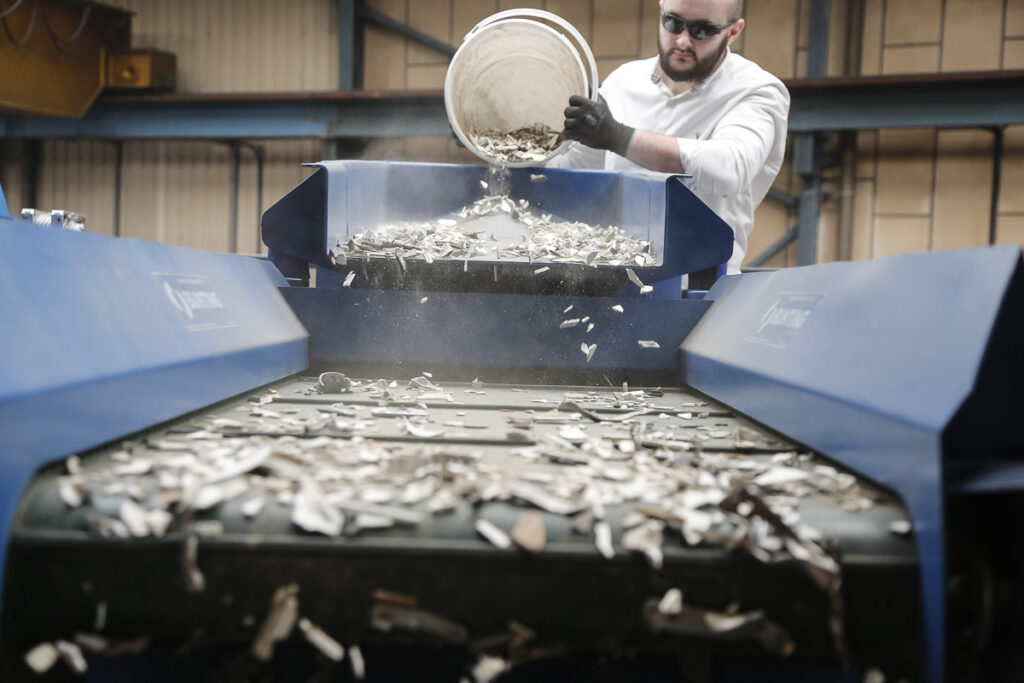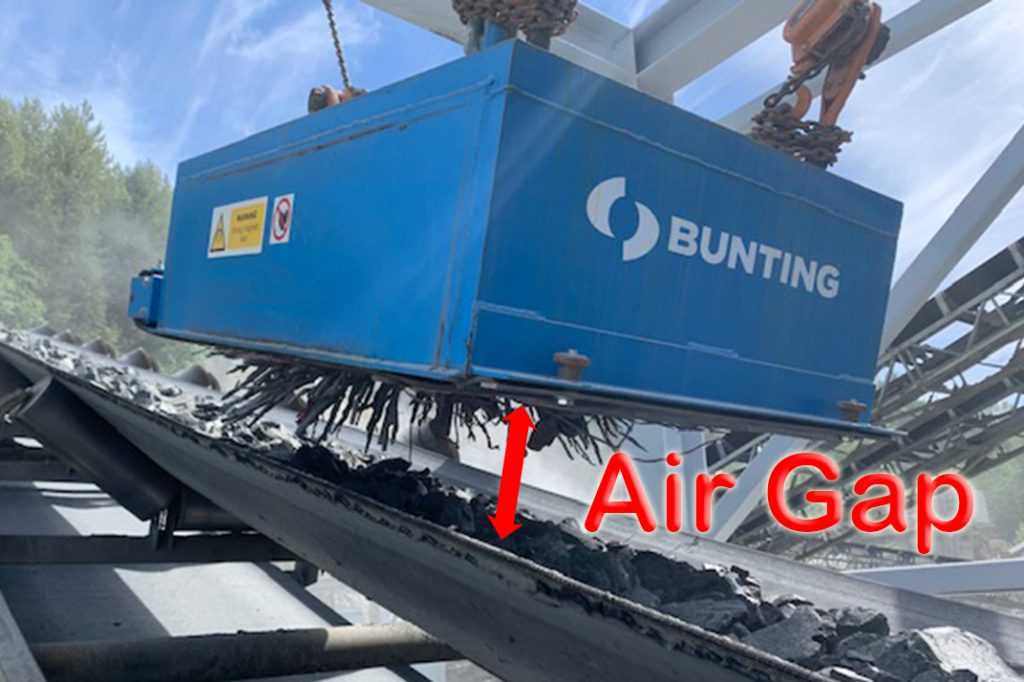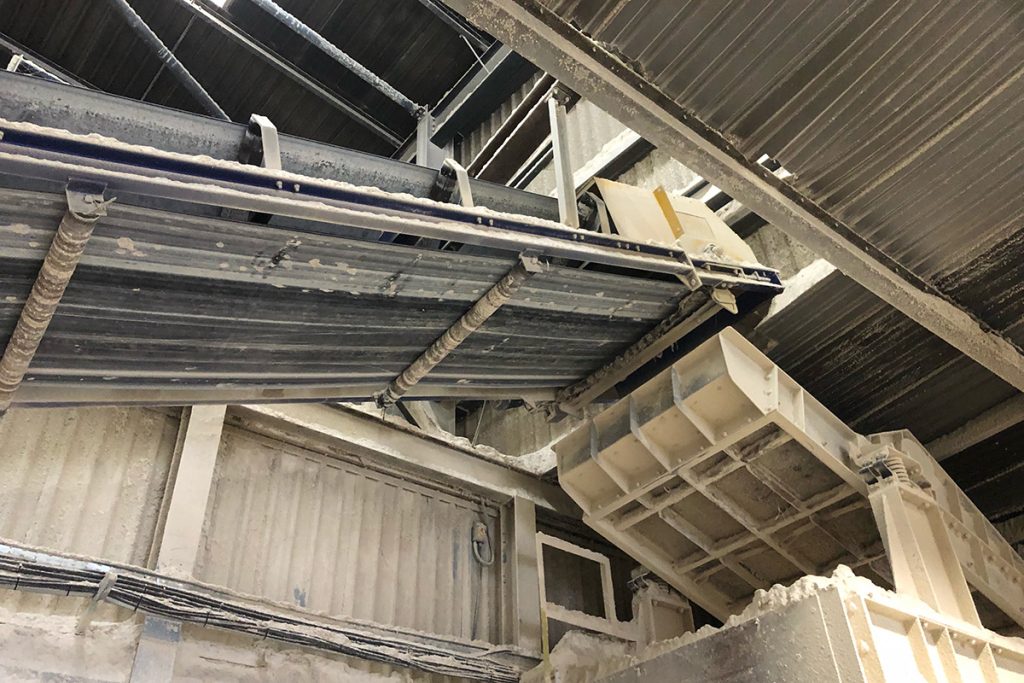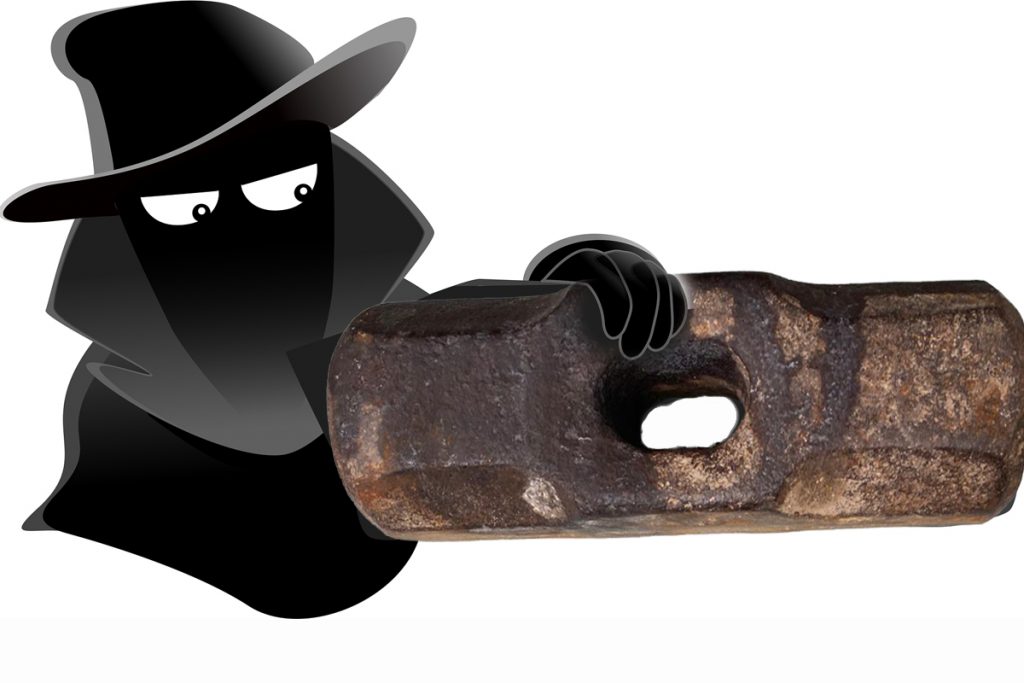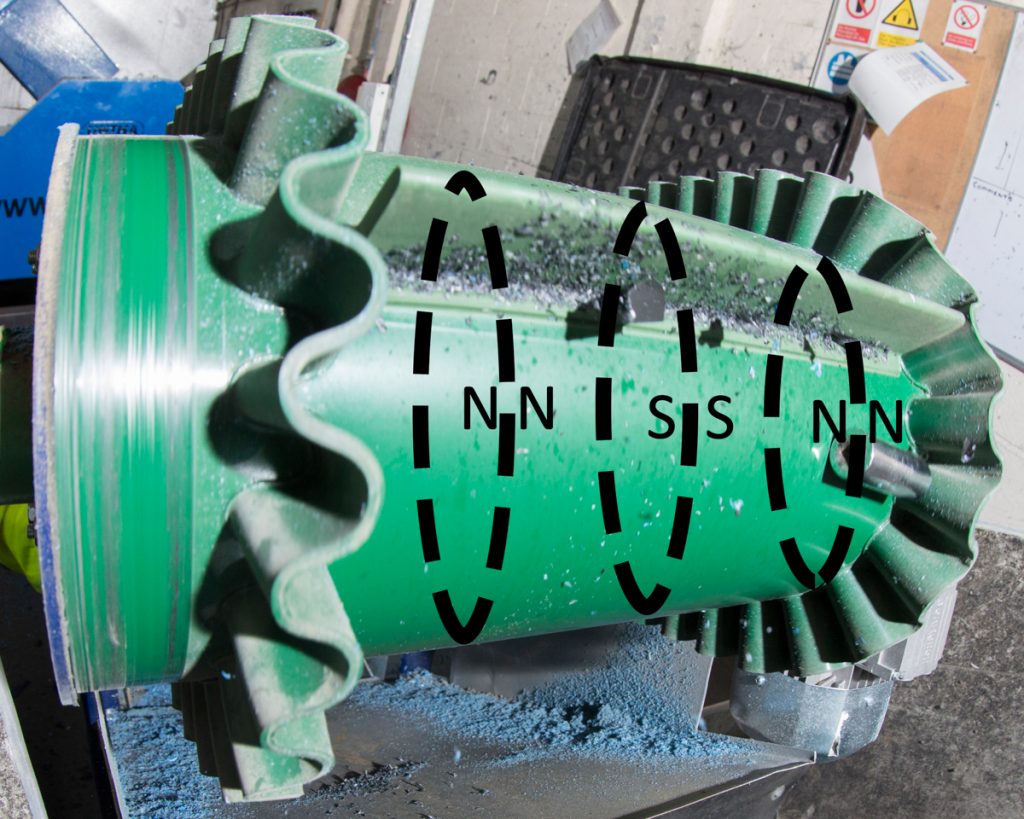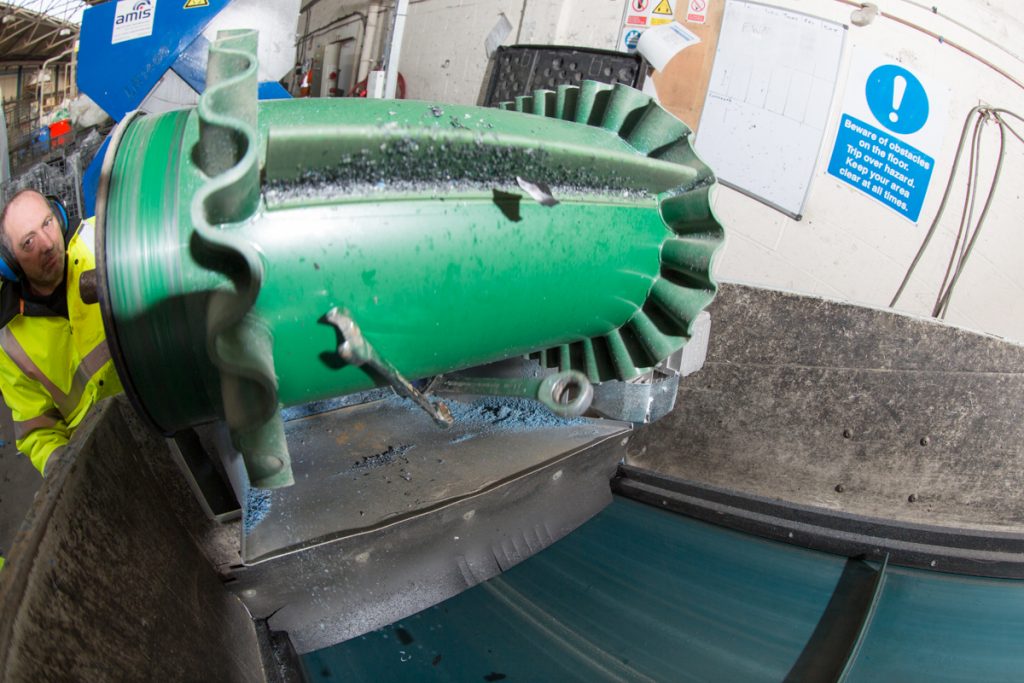Pulley Magnet
Magnetic Separation in Mining and Mineral Processing
Magnetic separators are commonplace in most mining and mineral processing operations. However, the term ‘magnetic separator’ encompasses a diverse range of specialist separation equipment with the ability to separate widely different materials such as large tramp metal and paramagnetic minerals. Magnetic separators for the mining and mineral processing sectors are broadly differentiated into two ranges. …
Read MoreSolving Quarrying and Mining Tramp Metal Problems
Tramp metal exists in all mining and quarrying operations. The problematic contamination is difficult to avoid. The nature of mining and quarrying – extracting ore and aggregate using large heavy equipment – results in a wide variety of tramp metal contaminating the mined material. Such metal needs identifying and removing before potentially causing costly damage…
Read MoreBunting Attracts Crowds at IFAT 2024
There was a constant stream of visitors on Bunting’s stand at the IFAT Munich 2024 (13-17 May). Bunting’s multinational team from the UK, Germany, Italy, and the USA talked metal separation with visitors from around the world. IFAT is the world’s leading trade fair for water, sewage, waste and raw materials management. “IFAT provided the…
Read MoreIndustrial Magnetiser Investment for Bunting
To meet the increased demand for magnetic separators following a sustained period of sales growth, Bunting has redesigned and refurbished the industrial magnetiser at their Redditch manufacturing facility in the United Kingdom. The enhancements make this DC impulse industrial magnetiser the largest in the UK, outside of academia. Magnetising Permanent Magnet Assemblies At the Redditch…
Read MoreEnhanced Metal Recovery with Bunting at IFAT 2024
Technology to effectively separate large and small ferrous and non-ferrous metal is the focus for Bunting at IFAT Munich 2024 (Messe Munchen, Germany, May 13-17). Advanced designs of magnetic separators, eddy current separators and electrostatic separators separate strongly and weakly magnetic particles, enabling the successful recycling of a wide range of waste materials. On stand…
Read MoreMagnetic Separator Air-Gap Explained
The ‘Air Gap’ plays a key role in the performance of a Magnetic Separator. In all magnetic separators, there is a gap between the magnet material or electromagnetic coil and the targeted particle. This ‘air-gap’ could be actual air or a non-metallic material such as stainless-steel or a rubber belt. When assessing an application, our…
Read MoreApplication Review – Small Tramp Ferrous from Recycled Gypsum
The extensive range of magnetic separators means that there are often several options for any one application. However, the final selection is dependent on a number of variables including the available space, separation objective, and the critical nature of the separation. This particular project required the improved separation of tramp iron from conveyed recycled gypsum.…
Read MoreThe Crusher’s Arch Enemy – Tramp Metal
Crushing quarried aggregate is a key process stage of most quarries and when recycling demolition waste. Effectively protecting the crusher from rogue tramp metal damage prevents production losses and repair costs. The wide range of available crushing technology enables the production of optimally sized aggregate. Whereas Jaw and Gyratory designs commonly feature as primary crushers,…
Read MoreWhat is an Axial and Radial Magnetic Field?
Rotary Magnetic Separators, such as the Drum Magnet and Pulley Magnet, are designed with a specific type of magnetic field. The type of magnetic field is considered when looking at any application and when deciding which design will achieve a customer’s separation objective. For these rotary designs of magnetic separator, there are two types of magnetic…
Read More3 Metal Parts Contaminating Plastic Waste
Recycling plastic waste is challenging at the best of times. However, when contaminated with ferrous metals, recycling is hindered by equipment damage, production downtime and poor end product quality. Thankfully, installing the optimum magnetic separator ensures that such ferrous metal contamination is removed. In this article we look at three examples of ferrous metal contamination…
Read More